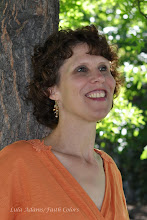

Journey to a Forgotten War
I’m excited to spread the news about my friend Tricia Goyer’s latest novel, A Valley of Betrayal. Unlike her first four novels, this new series takes place, not during WWII, but in the often forgotten Spanish Civil War of the 1930’s.
I’m excited to spread the news about my friend Tricia Goyer’s latest novel, A Valley of Betrayal. Unlike her first four novels, this new series takes place, not during WWII, but in the often forgotten Spanish Civil War of the 1930’s.
In the summer of 1936, Sophie—a young American artist—is traveling to Spain to meet her fiancé, Michael, when civil war breaks out. After a risky trip over the boarder she is quickly caught in the upheaval between Spanish patriots and those who supported Franco. Before Michael can get Sophie to safety in France, he is lost in a gun battle, breaking Sophie’s heart in more ways than one. Rather than seizing her chance to flee, Sophie begins to use her artistic gifts to support the cause of those who have become dear to her. But not everyone appreciates the statements that her powerful paintings make.
As always Tricia Goyer uses intriguing, courageous, true-to-life characters to bring history and war to life in a unique way. Scroll down for more on the story behind this exciting book.
A Valley of Betrayal is the first book in the Spanish Civil War Series and can be found at your local bookstore. Find out more about Tricia and her books at http://www.triciagoyer.com/ or http://www.triciagoyer.blogspot.com/. You can also read some of her great articles on http://www.girlsgodgoodlife.blogspot.com/!
The Story Behind the Novel:
A few years ago when I was researching for my fourth World War II novel, Arms of Deliverance, I came across a unique autobiography. One B-17 crewmember I read about claimed to make it out of German-occupied Belgium after a plane crash due, in part, to his skills he picked up as a veteran of The Spanish Civil War. Reading that bit of information, I had to scratch my head. First of all, I had never heard of the war. And second, what was an American doing fighting in Spain in the late 1930s? Before I knew it, I uncovered a fascinating time in history—one that I soon discovered many people know little about. This is what I learned:
Nazi tanks rolled across the hillsides and German bombers roared overhead, dropping bombs on helpless citizens. Italian troops fought alongside the Germans, and their opponents attempted to stand strong—Americans, British, Irishmen, and others—in unison with other volunteers from many countries. And their battleground? The beautiful Spanish countryside.
From July 17, 1936-April 1, 1939, well before America was involved in World War II, another battle was fought on the hillsides of Spain. On one side were the Spanish Republicans, joined by the Soviet Union and The International Brigade—men and women from all over the world who have volunteered to fight Fascism. Opposing them, Franco and his Fascist military leaders, supported with troops, machinery, and weapons from Hitler and Mussolini. The Spanish Civil War, considered the “training ground” for the war to come, boasted of thousands of American volunteers who joined to fight on the Republican side, half of which never returned home. Unlike World War II, there is no clear line between white and black, good and evil. Both sides committed atrocities. Both sides had deep convictions they felt worth fighting and dying for.
Loyalists—also know as the Republicans were aided by the Soviet Union, the Communist movement, and the International Brigades. If not for the weapons and volunteers from these sources their fight would have ended in weeks rather than years. While many men fought side by side, their political views included that of liberal democracy, communism and socialism. The Catholic Basque Country also sided with the Republic, mainly because it sought independence from the central government and was promised this by Republican leaders in Madrid.
Nationalists—or Francoists were aided mainly by Germany and Italy. The Nationalist opposed an independent Basque state. Their main supporters were those who believed in a monarchist state and fascist interests. The Nationalist wished for Spain to continue on as it had for years, with rich landowners, the military, and the church running the country. Most of the Roman Catholic clergy supported the Nationalists, except those in the Basque region.
During the Spanish Civil war, terror tactics against civilians were common. And while history books discuss the estimated one million people who lost their lives during the conflict, we must not forget that each of those who fought, who died, had their own tales. From visitors to Spain who found themselves caught in the conflict, to the communist supporters, Basque priests, and Nazi airmen . . . each saw this war in a different light.
During the Spanish Civil war, terror tactics against civilians were common. And while history books discuss the estimated one million people who lost their lives during the conflict, we must not forget that each of those who fought, who died, had their own tales. From visitors to Spain who found themselves caught in the conflict, to the communist supporters, Basque priests, and Nazi airmen . . . each saw this war in a different light.
These are the stories behind A Valley of Betrayal.
Tricia Goyer, October 2006
Tricia Goyer, October 2006

